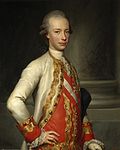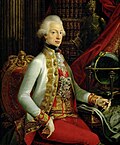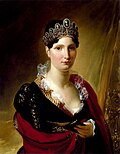| Grand Duke of Tuscany | |
|---|---|
  Left: Coat of arms under Medici period Right: Coat of arms under Habsburg-Lorraine period | |
 | |
| Details | |
| First monarch | Cosimo I de' Medici |
| Last monarch | Leopold II (de jure) Ferdinand IV (de facto/titular) |
| Formation | 27 August 1569 |
| Abolition | 16 August 1859 |
| Residence | Palazzo Pitti |
This is a list of grand dukes of Tuscany. The title was created on 27 August 1569 by a papal bull of Pope Pius V to Cosimo I de' Medici, member of the illustrious House of Medici. His coronation took place in Rome on 5 March 1570 by the hands of the Pope himself. [1]
Contents
- Background
- Medici grand dukes of Tuscany, 1569–1737
- Habsburg-Lorraine grand dukes of Tuscany, 1737–1801
- Bourbon-Parma kings of Etruria, 1801–1807
- Bonaparte grand dukes of Tuscany, 1809–1814
- Habsburg-Lorraine grand dukes of Tuscany, 1814–1860
- See also
- References
Cosimo's family, the Medici dynasty, had been ruling the Florentine Republic, the predecessor of the Grand Duchy of Tuscany, since 1434, first as Lords of Florence and later as Dukes. [2] The title of Grand Duke, was in fact the second title of recognition within the Tuscan politics given by a Pope to the Medici family, the first being that of Duke of the Florentine Republic, created by Pope Clement VII in 1532. [3] [4]
The official residence of the Grand Dukes was the Palazzo Pitti in Florence, bought by the Medici in 1549. [5]














